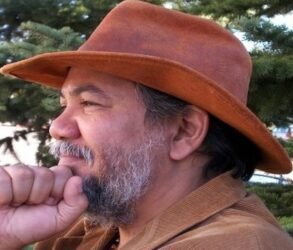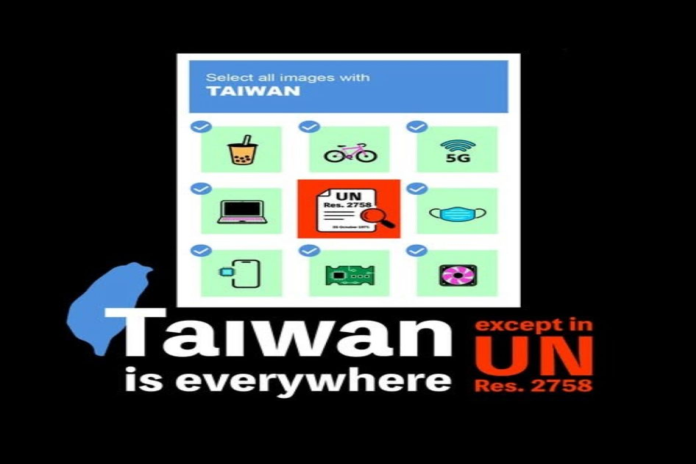By Johnny Coomansingh
Although the steelpan was named the national instrument of Trinidad and Tobago in 1992, the instrument was officially declared the national instrument on July 11, 2024. The National Musical Instrument Bill, 2024 was debated in Trinidad and Tobago’s Parliament and declared the Steelpan instrument as the country’s National Musical Instrument.
In research for my doctoral dissertation titled: Commodification and Distribution of the Steelpan as a Conflicted Tourism Resource it leaves me to wonder if all will be well with this declaration in this multi-racial, multi-religious and polyrhythmic state.
In 2004, I interviewed now deceased, Satnarayan Maharaj, secretary of the Sanatan Dharma Maha Sabha (SDMS), the governing body for the larger population of Hindus in Trinidad. In our little talk, I determined that he was not at all pleased with the steelpan being the national instrument. His tone indicated that there was an underlying conflict somewhere. Conflicts have arisen over the steelpan in certain sectors of the political landscape of Trinidad and Tobago. This ethnic conflict is one of the primary conflicts associated with the steelpan in the state.
Despite the contention presented by Maharaj, the descendants of the African slaves were engrossed in the desire to drum as a form of musical expression and celebration of joy in the slums of Port of Spain. The need to drum, to beat some kind of rhythm, seemed to be riveted in the psyche of the pioneers of the steelpan insomuch that they even risked being charged and imprisoned for their ‘crimes’ by the ruling British.
According to calypsonian Hollis Liverpool (sobriquet: The Mighty Chalkdust) oppressive actions engendered by colonial rulers of the day prevented drumming. Chalkdust pointed out that drumming is “a potent force in rallying the African community to action,” and so became identified, in some quarters, with Trinidadian nationalism.
The oppressive actions of the European white ruling class served only to stimulate the musical appetite of the subordinated class who turned to the music of the bamboo during the 1930s. Petrus Hendrikus Van Koningsbruggen in his book Trinidad Carnival: A Quest for National Identity stated: “… repression leads to new cultural forms.” Thus was born the tamboo-bamboo, which subsequently gave way to the beating of objects made from iron and steel, the steelband.
Tamboo is a derivative of the French word tambour, which means drum. Complementing the tamboo-bamboo bands during the 1930s were the dances, Limbo, Bongo, and an African twist of the French Belle Aire dance. This simple group of instruments, and the ‘Bottle and Spoon’ combination laid the foundation in the creation of the steelpan as it is known today.
The transition from tamboo-bamboo to the beating of metallic objects took place around 1935. In that year a band known as the Newtown tamboo bamboo band discarded their lengths of bamboo and took to the streets for J’ouvert (Jouvay – pening of the day) on Carnival Monday (Lundi Gras) with a full complement of metal objects. These objects included garbage bins and covers, biscuit tins (cookie containers), drums, paint cans, brake drums, hoes, chamber pots (posy or po), and bottles and spoons.
Following the tamboo-bamboo was an array of crudely designed metal drums. Fashioned from biscuit tins were the drums known as the cuff boom, and slap bass. Accompanying the bass drums were the tenor kittle or side kittle made from a paint or zinc cans, and the bass kittle or the ‘dud-up,’ a two-note drum formed from caustic soda drums and eventually, the 55-gallon oil drum.

The creation of these various drums during the 1940s heralded the real beginnings of the steelband, as we know it today. Anything that could have made some noise was incorporated into what was known as the rhythm section of the steelband. This use of “found” objects capable of creating noise connects earlier forms of drums in Trinidad to the steelpan. The rhythm section of a present day steel orchestra is called the engine room.
Beyond any doubt, the steelpan was invented in Trinidad almost by accident. Emerging from the slums and shanties of the Port of Spain suburbs, the sound of the steelpan was basically a call to freedom from slavery and a celebrative element of emancipation enmeshed in the pre-Lenten Carnival.
Colonial oppressors at one time stymied the expression of the children of slaves. They prevented their drumming but expression materialized in the formation of tamboo-bamboo bands. And despite the political and religious ‘noise’ from the Afro-Indo leader(s) in Trinidad and Tobago, the steelpan became a vital part of the soundscape of Trinidad and Tobago. The steelpan as a cultural icon is now a cultural product.
No one knew what the final product would have been. Moreover, with the advances in technology, research and development, it is still not clear if the innovation has come to a point of tonal finality, in the sense that there is ongoing experimentation with the creation in several countries. Even NASA is involved with the instrument.
In parallel with its development, conflicts have arisen in several quarters, locally and internationally with regard to historical claims and cultural heritage. The history of the instrument is in a state of disarray and confusion because no one was ‘careful’ to write about its progression. Because of the ‘failure’ to record, several important aspects of the soundscape have escaped notice.
Selwyn Ryan in 1996 intimated that there is the certainty that racial discrimination was meted out to Indo-Trinidadians because of their cultural values with regard to industriousness, thrift and their closely-knit family lifestyle. It is a fact that they were subjected to the hegemony of the Peoples National Movement (PNM) for well over 30 years. They were made to accept whatever the PNM government orchestrated. In other words, the motto of Trinidad and Tobago: Together we Aspire, Together We Achieve, became a meaningless statement. Another researcher in writing about the motto stated, “It is indeed ironic that this is far from true.”
Although some Indo-Trinidadians play the steelpan instrument, for example, the Dattatreya Yoga Center’s Nada Sangama Steel Orchestra and The Bachew Song, an all Indo-Christian church group, it is still difficult to say whether all Indo-Trinidadians have accepted fully, the Afro-centric steelpan as the cultural icon of Trinidad and Tobago. There is the probability that the instrument’s designation as the national instrument in 1992 was done carte blanche, and without consultation with the Indo-Trinidadians. At least that’s what Satnarayan Maharaj thought.
In Trinidad there are several East Indian pannists, steelpan music arrangers, steel orchestra captains, and pansides but the conundrum continues whether there will ever be a point in time in when Afro-Trinidadians and Indo-Trinidadians will fuse together with the steelpan as the adhesive. Despite the conflicts that may harass the dominant races in Trinidad and Tobago regarding the invention of such an instrument, the steelpan emerged from a climate laced with racism and subjugation in an era of European colonialism. The British are no longer here, but the possibility of the steelpan as an adhesive ingredient within the plural society of Trinidad and Tobago is quite distant. The question remains whether citizens should ‘beat book’ or ‘beat pan.’
The apparent thorn in the flesh of steelpan culture in Trinidad has to do with the voice of the Sanatan Dharma Maha Sabha (SDMS), the controlling organization of the largest following of Hindus in Trinidad. (Note: The SDMS operates several government-assisted and privately governed Hindu elementary and secondary schools throughout Trinidad). Satnarayan Maharaj, Secretary General of the SDMS at an educational consultation regarding The Place of Culture in Educational Attainment, stated: “While the Indian was beating book, the African was beating Pan…we will take all the top places in the land,” referring to jobs in both the private and public sector. This was a statement that shocked the people of Trinidad and Tobago.
Maharaj also indicated that when steelpan instruments were being issued to elementary schools in the country the ministry of education did not seek to provide Indian musical instruments, for example, the harmonium, sitar, dholak, dhantal, tabla, mezira and ankle bells to any Hindu institution. This move by the ministry according to the SDMS was disrespectful, a slap in the face.
It appeared that Indians (Hindus) or their instruments were not recognized or accepted in a predominantly Afro-centric society. The steelpan is an Afro-centric invention but as the research clearly shows, East Indians tend to quietly wiggle their way out of a situation while continuing to foster their own teachings and culture, and social mobility.
Maharaj informed that there is a definite correlation between sound and behaviour and indicated that certainly, the sound of the steelpan does not produce the desired behaviour so necessary for “cultured” people. Maharaj conjured that the steelpan engenders the overt revelation of sensuality and sexuality exemplified by the manner of the behaviour of participants on carnival day. This to him has nothing to do with “culture.” Maharaj satirically chimed that East Indians were beating items made of metal long before Africans in Trinidad were beating steelpan. They were beating the lota (brazen jar for holding water) with British pennies, so symbolic of the nature of the East Indian and their unrelenting quest for economic supremacy.
Notwithstanding what Maharaj has alluded to, there is yet a ray of hope for the steelpan instrument in Indo-Trinidadian circles. The whole question of partisan politics of the (PNM) in the unilateral naming of the steelpan as the national instrument, the inclusion of steelpan in educational institutions regardless of Indo-Trinidadians, the suppression of East Indian culture, and the apparent favour given to Afro-Trinidadian organizations is very much apparent in Trinidad and Tobago. There is a long history of Afro-Indo conflict in Trinidad and Tobago. Although it cannot be dated, there is clear evidence of this scenario since independence.
Despite the apparent ‘inequality’ in the system, a television cultural program, Caribbean Tarang aired on May 23, 2004, in Trinidad showed several pannists of East Indian descent and an Afro-Trinidadian interpreting an Indian musical score on the instrument. Regardless of the teachings of the SDMS and the exclusion of the Afro-Trinidadian in the Hindu way of life (culturally and socially), changes are occurring in the landscape with regard to the greater infusion of the steelpan among East Indians. The conflict has not yet been resolved but given time, it will.
Prior to August 31, 1962, the date of Trinidad’s independence, Afro-Trinidadians were constantly subjected to laws that suited the purposes of European white supremacists who controlled the colony. And although the British attempted to sanitize, or altogether erase the culture of the Afro-Trinidadian, this did not happen.
Stephen Stuempfle in his book: The Steelband Movement: The Forging of a National Art in Trinidad and Tobago pointed out that the creation of the steelpan in Trinidad must be understood in terms of the island’s “history of colonialism and decolonization, class hegemony and resistance, and ethnic diversity and creolization.” Today the steelpan and its music can be heard in almost every corner of the globe regardless of the seeming opposition and apparent resistance of the SDMS. My suggestion is simply this, beat book and play the steelpan during a study break.





